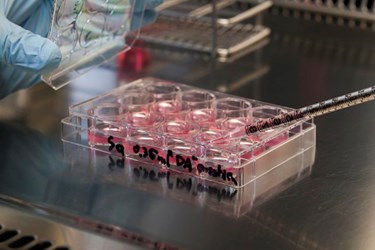Scientists ‘Snip' HIV From Cultured Human Cells

Scientists from Temple University reported that they have designed a new approach to remove HIV from human cells growing in culture through genome editing.
While modern antiretroviral agents help most HIV-positive patients to keep the disease at bay, there is still no way to rid the body entirely of the virus. The researchers, led by virologist Kamel Khalili, mimicked bacteria’s strategy in fighting off viruses. In their proof-of-concept experiments, the scientists used the CRISPR/Cas9 system to remove the entire integrated HIV viral genome from cells. They introduced an enzyme together with guide RNAs that identify both ends of the HIV DNA.
“Once both the enzyme and guide RNA are present in the infected cells, then the RNA hunts the viral genome, and the snipping enzyme takes over. The result is complete eradication of viral DNA from the host cells,” explained Khalili.
In one experiment, the CRISPR/Cas9 system snipped off both copies of HIV integrated on two different chromosomes. In another, cells which have undergone the treatment seemed to build resistance against new infections of the virus.
University of Pennsylvania virologist Paul Bates, who wasn’t connected to the research, commented that the results deserve attention but are at best preliminary. One obstacle is to seek and target latent HIV reservoirs in the body. “We don't even know exactly where the latent reservoirs reside, and they're likely scattered and diverse in numerous cell types. It's the hurdle that any cellular targeted HIV therapy has had for the last 10 years, and it remains a hurdle.”
Another obstacle is that HIV must be eliminated from all cells or the disease may come back. Khalili said that the team is working on an improved delivery system to advance the findings forward. The team published their work in the journal Proceedings of the National Academy Sciences (PNAS).
Other scientists have worked on providing a cure for the ravaging disease, which killed 1.5 million in 2013. Some of the more recent attempts include a team of hematologists from University of California, who produced white blood cells with HIV resistance, and pharmaceutical companies like Johnson & Johnson and GSK that have been developing various HIV treatments.
